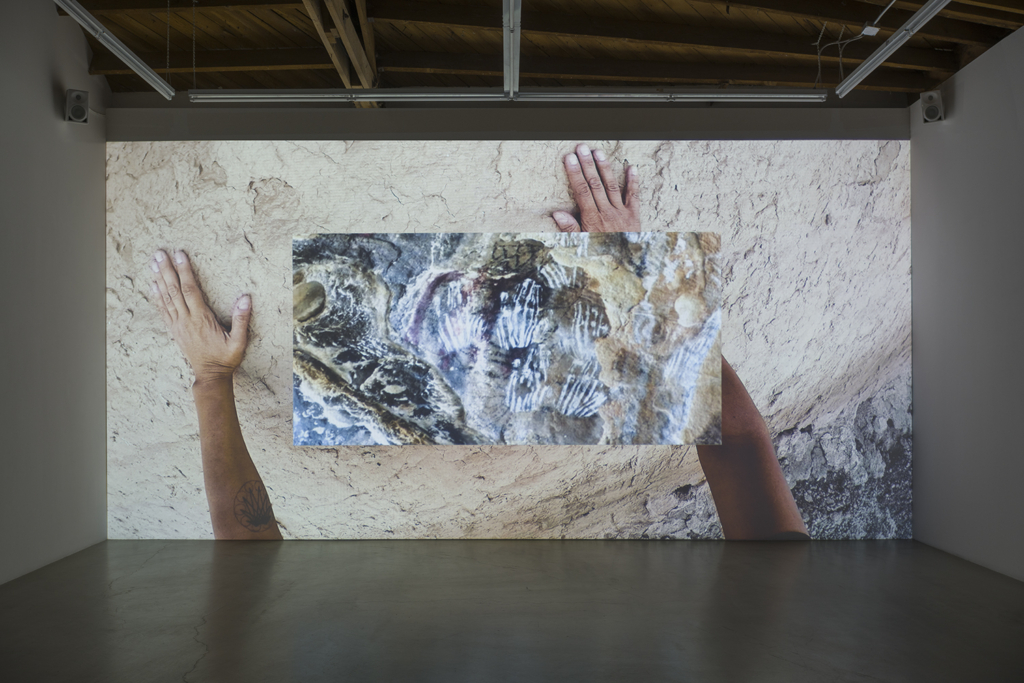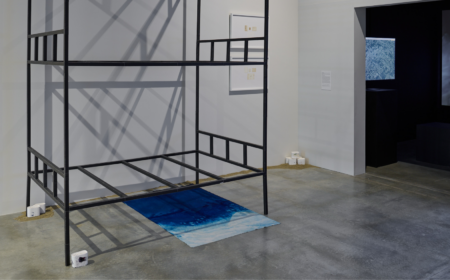Christine Howard Sandoval

Christine Howard Sandoval, Niniwas- to belong here, 2022, single channel video with audio, TRT 12:23, Sound design in collaboration with Luz Fleming Installation for the green shoot that cracks the rock, parrasch heijnen Gallery, LA, 2022. Image courtesy of parrasch heijnen Gallery
“When I wrote the words ‘genocide is climate change’ I was rereading parts of a scientific text that was published in 2019 titled, ‘Earth system impacts of the European arrival and Great Dying in the Americas after 1492.’ The study concluded that the mass death of Indigenous peoples in the Americas during Contact greatly reduced human cultivation of the environment, creating a massive decline of CO2 in the atmosphere. The environmental shift accelerated a climate change event now known as The Little Ice Age, which lasted for about 500 years (Koch et al. 2019). ‘Genocide is climate change,’ as it appears in my video piece titled Niniwas-to belong here, is meant to dig into the site itself and how the barrenness of the land can be understood as a result of genocide.”
“I want to consider the consequences of the abrupt and violent disruption of active ancient modes of coexistence not only for Native people, but for the more-than-human kinships that were affected, including the planet itself. ‘Genocide is climate change’ addresses the intentional destruction of a people, in whole or part, as a force that fundamentally alters the climate and the ecosystem of the entire Earth.”
Learn More
Further Reading
Christine Howard Sandoval & Jessica L. Horton
‘Genocide is climate change’: a conversation about colonized California and Indigenous futurism World Art, 13:2 (2023), 177-196.



